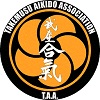What Is Aikido?
Aikido was founded by Morihei Ueshiba (1883-1969). As an accomplished martial arts practitioner and instructor he continually sought new directions for his own personal training and development. This lead to his creation of a new martial art, aikibujutsu, in 1923. The name Aikido has been used since 1941.
The name Aikido consists of three Japanese Characters (Kanji): AI, to unite; KI, spirit; DO, way or path. The last character is significant in that it implies a path, or philosophy that one follows in one’s life. This delineates Aikido from jutsu or systems of techniques.
As a Japanese martial art consisting of throws and joint techniques it is similar to jiujutsu. However, the Founder felt that his system was unique in that it united mind, body, and spirit of the practitioner in such a way to overcome an opponent without resorting to a clash of arms. Employing movement principles and concepts that are special to Aikido practices, he used old traditions to develop the art to become a dynamic part of modern society.
Japan has a long tradition of martial arts, which were historically taught only to a select few. After 1945 the devastation and suffering of the war caused the Founder to reflect on the purpose of the martial arts, and Aikido was opened to the public. He strongly felt that “Aiki is not a technique to fight with or defeat the enemy. It is the way to reconcile the world and make human beings one family.”
At this time Aikido is enthusiastically practiced by approximately 1.5 million people throughout the world.
What Is Takemusu Aikido?
The Founder considered Takemusu Aikido to be the highest form of Aikido. Takemusu contains two Japanese characters: Take (Bu) = Martial, and Musu = To be born. These two characters combine to refer to martial movement spontaneously created, without active thought, resulting in a pure Aikido technique.
He felt that one’s training went through four major periods of development: Basic Technique, Flexible Technique, Flowing Technique, and finally Takemusu Aiki. He considered this final form of Aikido to be attainable by anyone through practice.
